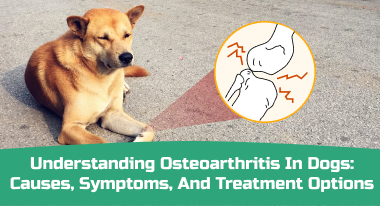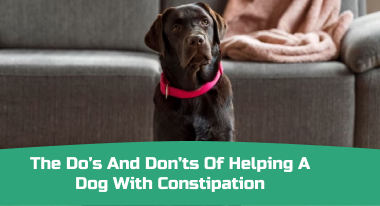Table of Contents
As pet owners, we want to ascertain that our furry companions are healthy and happy. One of the most important ways to do this is to be aware of the common eye problems that can affect dogs, such as corneal ulcers.
Corneal ulcers, also known as corneal erosions or sores, are a condition characterized by the breaking down or weakening of the corneal epithelium, the outermost layer of the transparent tissue that covers the front of the eye. It is a severe eye condition, and ulcers can be caused by diverse factors, including injury, infection, or underlying medical conditions. The ailment can be extremely painful for dogs, and if left untreated, the illness can lead to vision loss or even blindness.
In this blog post, we’ve explored the various causes of corneal ulcers in dogs, including both external factors, such as injury or infection, and internal factors, such as immune-mediated disorders. We will also discuss the different stages of corneal ulcers as well as the treatments available.
Understanding the causes, symptoms, and treatment options for corneal ulcers can help pet owners take the necessary steps to protect their dog’s vision and overall health.
What is Corneal Ulcer in Dogs?
Corneal ulcers in dogs are a serious eye condition that occurs when the surface of the eye (the cornea) becomes damaged or eroded. These ulcers can be caused by factors including injury, infection, or underlying medical conditions. They can be extremely painful for dogs and, if left untreated, can lead to complications such as vision loss. As per the statistics superficial corneal ulcer is more predominant i.e. 58.3%, followed by mid-stromal ulcer i.e. 25%.
Symptoms of a corneal ulcer in a dog may include redness, squinting, excessive tearing, and the presence of a cloudy or opaque area on the cornea. Treatment for a corneal ulcer typically involves the use of topical antibiotics and other medications to promote healing and prevent complications.
In severe cases, surgery may be required to repair the damaged tissue. It is essential to seek prompt veterinary care if a dog is suspected of having a corneal ulcer, as untreated ulcers can lead to scarring, vision loss, and even blindness.
Common causes of corneal ulcers in dogs include trauma or injury to the eye, eyelid abnormalities such as entropion or ectropion, dry eye, glaucoma, foreign bodies in the eye, tumors, and bacterial, viral, or fungal infections.
It is important to note that if a dog is showing signs of a corneal ulcer, it is crucial to seek immediate veterinary attention. Early diagnosis and treatment of the ulcer prevent severe complications in the ailing pet.
Symptoms of a corneal ulcer in dogs may include:
- Redness in the eye: The affected eye may appear red and swollen.
- Squinting or rubbing at the eye: The dog may squint or rub its eye due to pain and discomfort.
- Discharge from the eye: The pet may have a clear or cloudy discharge from the affected eye.
- Cloudiness or opacity of the cornea: The cornea may appear cloudy or opaque, which can affect the dog’s vision.
- Loss of appetite: The dog may lose its appetite due to the pain and discomfort caused by the ulcer.
- Behavioral changes: The pet may seem depressed or irritable and may be less active than usual.
- Sensitivity to light: The suffering canine may be sensitive to light and may avoid bright areas.
Note that these symptoms can also be caused by other eye conditions, so it’s essential to seek vet suggestions if you suspect your pet has a corneal ulcer. A veterinarian usually performs a thorough examination and may run diagnostic tests such as a Schirmer tear test and a fluorescein stain test to confirm the diagnosis.
What are the Causes of Corneal Ulcers in Dogs?
Corneal ulcers in dogs can be caused by a variety of factors, including:
| Causes | |
| Trauma or injury | Dogs can develop corneal ulcers from injuries such as scratches or cuts to the eye, or from blunt force trauma. |
| Eyelid abnormalities | Conditions such as entropion (eyelids that roll inward) or ectropion (eyelids that roll outward) can cause the eyelashes to rub against the cornea, resulting in an ulcer. |
| Dry Eye | Keratoconjunctivitis sicca (KCS) or dry eye is a condition in which the eye doesn’t produce enough tears to keep the surface of the eye moist. This can lead to corneal ulceration. |
| Glaucoma | Elevated intraocular pressure can lead to corneal ulcers. |
| Foreign bodies | Objects such as grass seeds or small particles can become lodged in the eye, causing an ulcer to develop. |
| Tumors | Tumors or growths on the eye can cause an ulcer to develop. |
| Bacterial, viral or fungal infections | These types of infections can cause an ulcer to form on the cornea. |
| Immune-mediated diseases | certain immune-mediated diseases can lead to corneal ulceration. |
Note that some breeds of dogs, such as Boxers and Boston Terriers, are more prone to corneal ulcers due to their unique facial structures. Additionally, certain diseases, such as diabetes or allergies, can increase the risk of corneal ulceration.
What are the Stages of Healing of Corneal Ulcers?
The healing process of a corneal ulcer can be divided into several stages, each with its own unique characteristics and challenges:
- Stage 1: The first stage of corneal ulcer healing is the acute phase, which typically lasts for 24 to 48 hours after the ulcer forms. During this phase, the body’s inflammatory response is activated, resulting in the formation of red blood cells, white blood cells, and other inflammatory cells at the site of the ulcer. This influx of cells can cause the cornea to become cloudy and swollen.
- Stage 2: The second stage is the proliferative phase, which typically lasts 2 to 7 days. During this phase, the body begins to repair the damaged tissue by producing new cells to replace those that have been lost. The process can result in the formation of a thin line around the edge of the ulcer, which is known as a “strawberry border.” This line is a sign that the body is actively working to repair the ulcer.
- Stage 3: The third stage is the remodeling phase, which can last for several weeks or months. During this phase, the body continues to produce new cells to replace lost cells, but at a slower rate. The ulcer will begin to shrink, making the edges less distinct. The cornea will also begin to clear up, and the eye will start to look more normal.
- Stage 4:The fourth stage is the final stage, called the maturation phase, which can last for several months. The cornea will be completely healed, the ulcer scar tissue will be stable, and the vision will be back to normal.
The healing process can vary from dog to dog, and the healing time may vary depending on the severity of the ulcer, the underlying cause, and the treatment used. It’s essential to seek prompt veterinary care in case of any signs of corneal ulcers in dogs and to follow the veterinarian’s instructions during the healing process.
What is the Treatment of Corneal Ulcers in Dogs?
Treatment for a corneal ulcer in dogs depends on the cause and severity of the disease condition. The main goal of treatment is to promote the healing of the ulcer, prevent infection, and preserve vision. Treatment options may include:
- Topical antibiotics to prevent infection
- Topical anti-inflammatory medications
- Topical pain relief
- Surgery to remove foreign bodies or correct eyelid abnormalities
- Fluids to maintain hydration
- Third eyelid flaps (TEF) in severe cases
To shed light on the core treatment process of corneal ulcer in dogs , we have devised an infographic for a crisp visual reparation. Let’s have a look:

Treatment of Corneal Ulcers in Dogs
| Corneal ulcers in dogs develop due to abrasions, scratches, chemical burns, infection, blunt trauma, etc. It results in deeper layers of the cornea being lost. Let’s check out the treatment of the disease: #1 Topical Antibiotics For uncomplicated corneal ulcers vet usually suggest topical antibiotics such as Atropine.Also, pain reliever eye drops are prescribed to use multiple times a day. #2 Lubricant Drops Antibiotic lubricant drops and ointments are used to prevent an infection.Oral and injectable medications are also administered in the treatment. #3 Surgery Based on the severity of the condition, corneal ulcers may require surgery.In the advanced stage, the vet prescribes bactericidal and fungal antibacterial antibiotics with surgery. #4 Anti-inflammatory Therapy Systemic anti-inflammatory therapy is also suggested to cure uveitis associated with corneal ulceration.Collagen contact lenses are used in severe cases to protect the cornea from sources of ocular irritation. # 5 Third Eyelid Flaps (TEF) .Third eyelid flaps (TEF) may be suggested if the corneal ulcer is deep and is not healing.Using a collar is suggested to prevent the canine from rubbing and allow the cornea to heal appropriately. |
Conclusion
In conclusion, corneal ulcers in dogs are an eye condition that can cause blindness and permanent vision loss if not treated promptly. Pet owners should be aware of the signs and symptoms of this condition and the common causes to seek early diagnosis and treatment. Understanding the treatment options and the importance of seeking immediate veterinary attention is crucial to preserve the dog’s vision.
Remember that corneal ulcers can happen due to a variety of factors and that early diagnosis is vital. If you suspect your pet may have a corneal ulcer, it is crucial to seek veterinary attention as soon as possible to ensure that your furry friend stays healthy and happy.
Disclaimer: The content on the site is for educational purposes only, and it does not provide medical advice. The shared information must not be treated as a substitute for or alternative for medical practitioner advice, diagnosis, or treatment. Regarding any concerns about your pet’s health, seeking veterinary guidance is of utmost necessity. Each pet has specific health, fitness & nutrition needs. Do not disregard, avoid or delay pet health-related advice from veterinarians based on reading the information provided on this site.
Related FAQs
- How long does a corneal ulcer last?
The duration of a corneal ulcer in dogs can vary depending on the ulcer’s size, depth, location, and underlying cause. Typically, with prompt diagnosis and appropriate treatment, small superficial ulcers can heal within 2 to 3 days. However, deeper or larger ulcers can take several weeks or even months to heal.
In some cases, the ulcer may recur or not heal completely, especially if the underlying cause is not addressed. In such cases, the dog may have a permanent scar that can affect its vision.
- Can A Corneal Ulcer In Dogs Be Cured?
Corneal ulcers in dogs can be cured with proper diagnosis and treatment. The goal of treatment is to promote the healing of the ulcer, prevent infection, and preserve vision. It’s important to note that the underlying cause of the ulcer must be addressed in order to prevent a recurrence. Additionally, it’s crucial to follow the treatment plan recommended by the veterinarian and to bring the dog back for follow-up appointments to ensure that the ulcer is healing properly.
- How Long Does Corneal Ulcer Pain Last?
The duration of pain associated with a corneal ulcer can vary based on the severity of the ulcer and the underlying cause. In most cases, pain associated with a corneal ulcer is typically most severe during the acute phase of healing, which typically lasts for the first 24 to 48 hours after the ulcer forms. As the body begins to repair the damaged tissue and the ulcer starts to heal, pain may gradually decrease.
However, some dogs may continue to experience pain and discomfort even as the ulcer is healing. It can be due to the fact that the healing process can be slow, and the cornea may take several weeks or even months to completely heal. Additionally, some dogs may be more sensitive to pain than others and may experience discomfort for extended periods of time.



